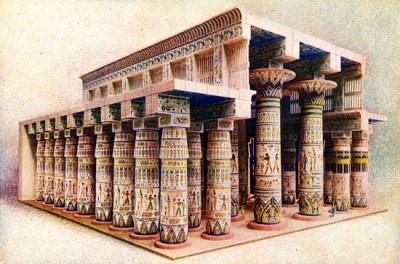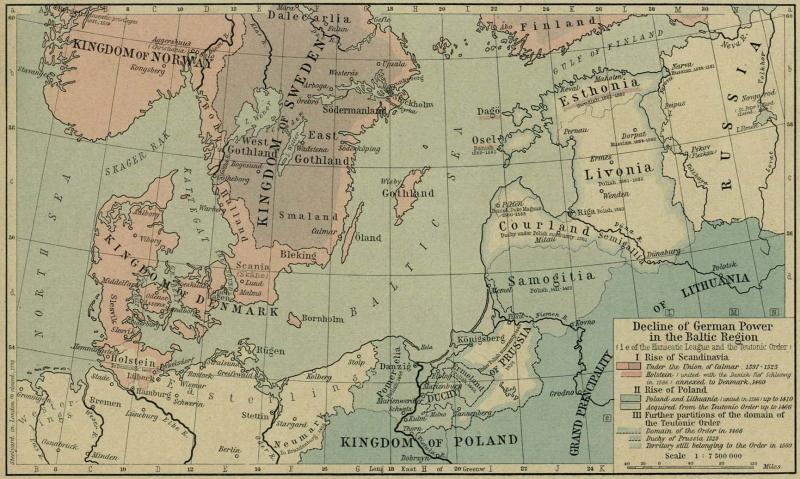In my current work to sharpen the profile of the Ancient Lands setting I am creating, I started looking deeper into the old Planetary Romance genre. In many ways it’s “Sword & Sorcery with laser guns”, but I would say it usually has a more grander scale and glamorous atmosphere to it, which I really love. The old Star Wars movies (and the most recent one) really are much more Planetary Romance than Space Opera, which is the genre of Foundation, Lensman, and Enders Game. Mass Effect, which very greatly inspired me, is both. The business with the Reapers, Cerberus, and the human Systems Alliance is classic Space Opera, while the story branches that deal with the Krogan and the Quarians feel very much like classic Planetary Romance to me. While looking for more in-depth information about the stylistic elements of Planetary Romance, I came across this interesting article adressing the feeling of ancient history that you find in the old Star Wars movies. (I am in agreement that the Expanded Universe mostly missed this aspect.) Basically, Star Wars feels ancient because even though the technology is much more advanced than ours, it is used in very antiquated ways. The Empire builds huge mechanical war elephant. Intelligent robots are treated and traded like slaves. And of course you have knights fighting with swords. There’s a princess and the big bads are adressed as Lord and as Master. Despite the technology, Star Wars really feels like its the ancient past, not the distant future.
And that got me thinking. Certainly you could use the same technique to make a relatively generic fantasy setting not feel like the late middle ages, but as being set thousands or even millions of years earlier in the history of their planet. Robert Howard set the Hyborian Age of his Conan stories in an age between the sinking of Atlantis and before the start of the Neolithic, but is often rather inconsistent in making it really feel that old. When people are trying to put Conan into pictures, they usually cheat a bit and don’t show the armor and weapons that are actually described and replace them with something more ancient Greek looking.
So I started thinking about elements that I would identify as visual clues that a story is set in an age long before the emergency of equivalents to medieval France or England. And I turned up with a surprisingly lot.
- Giant Lizards: Reptiles today are small. Millions of years ago Reptiles could be huge. You don’t have to have actual dinosaurs, but something that looks like it could have been a dinosaur certainly should do the deed.
- Volcanoes: Given the total age of the Earth and the amount of time between today and the dinosaurs, it seems very unlikely that volcanoes had been much more common during the time of the dinosaurs than they are now. But for over a century, all decent artists painting prehistoric animals put volcanoes in their pictures! It doesn’t make sense and it doesn’t have to make sense. Volcanoes just feel and look very prehistoric.
- Bronze Armor: As I mentioned above, one of the big things where Conan stories feel anachronistic is armor. And it’s something that makes a big difference. Put your heroes and soldiers into bronze breastplates and give them crested helms and big round shields and you instantly have a very different feel than warriors in steel plate armor or chainmail.
- Oracles: What knight has ever gone to an oracle? Ocasionally you have someone secretly consulting a witch in the night to gain forbidden knowledge. But making a pilgramage to a sacred oracle to recieve the wisdom of the gods is something very un-medieval.
- Slaves: When these come up in medievalesque fantasy it’s usually in the form of organized crime. But you’ll almost never see the average noble or wealthy merchant having lots of slaves in their homes and as their workers unless the story wants to point out that they are dispicable villains.
- Skulls: “Why skulls?!” After the great plagues of the late middle ages skeletons became a fashionable motive in art, but usually we consider skull decoration as something primitive and savage. But there isn’t any reason why you can’t have depictions of human and animal skulls in the decoration of the homes of the rich and powerful.
- Sacrifices: For reasons I don’t know Christians and Muslims don’t do sacrifices. Which gives it a feeling of being primitive and barbaric. But during antiquity many extremely advanced civilizations sacrificed animals to their gods and of course you can also have them sacrifice people. That really sets a very different tone for a fantasy world.
- Cannibals: Have you ever had a knight deal with people who eat people?
- Animal Gods: Again, in western thought, humans are created in the image of god. The Greeks did it too. To my knowledge only the Egyptians had gods with Animal heads, but during the middle ages it has always been popular to depict pagan demon-gods with animal features, and we still associate animal features with deities of primitive societies. Also always fun is having your people worship Old Gods like Cthulhu, Yog-Sothoth, or Shub-Niggurath. As long as it doesn’t look human it’s fair game.
- Scrolls: Wizards and sages love their books. But there isn’t any practical reasons why you couldn’t also have them read from scrolls. An interesting alternative to parchment or papyrus is strips of bamboo sewn together with thread, so that each bamboo splint holds one line of text.
- Clay Pots: These never disappeared and where still very common during the middle ages. But in antiquity pottery really was the way to go for all kinds of containers. Switch some wooden tankards for clay cups and some barrels for amphoras and your tavern will feel a lot more ancient.
- Ziggurats and Pyramids: The only true way to build a giant temple or palace.
- Halls of Pillars: Before the Romans figured out how to make a self supporting arch, it was really difficult to hold up a large ceiling. While stone is very hard when you press down on it, it actually snaps very easily when you bend it unless you make it really thick and put the support pillars very close together. (Karate chopping roof tiles and cinder blocks isn’t nearly as hard as it looks.) In Egyptian temples you often can’t see the hall for all the pillars which take up half of the floor space. The Greeks got a bit better by cheating and making the roofs out of wood (which is why the Acropolis hasn’t one anymore), but they still needed a lot of pillars and interior walls. Consider this when describing palaces and temples. At least some people might unconsciously make the association.


